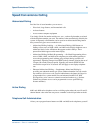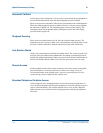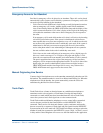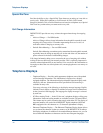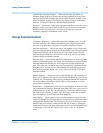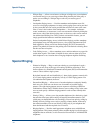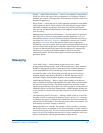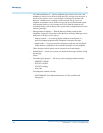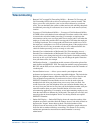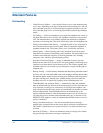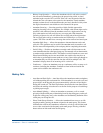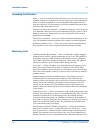
Telecommuting
125
Overview for Avaya IP600 Internet Protocol Communications Server
555-233-001 — Issue 5 — November 2000
B
Telecommuting
• Remote Call Coverage/Call Forwarding Off-Net — Remote Call Coverage and
Call Forwarding Off-Net allow calls to be redirected to a remote location. This
allows you to have calls placed to your on-site office redirected to your home
office. You can administer the system to either monitor calls and bring them back
for additional processing if not answered or to leave calls at the remote (off-net)
location.
• Coverage of Calls Redirected Off-Net — Coverage of Calls Redirected Off-Net
(CCRON) allows calls that have been redirected to locations outside of the switch
to return to the switch for further processing. For example, an employee that
telecommutes can have two coverage paths. One coverage path is used when the
employee is in the office and the other coverage path is used when the employee
is working from home. The coverage path used from home would have a call to
the employee’s work phone cover to his or her home phone. If the employee does
not answer the call or is busy on another call, the call is redirected back to the
switch for further processing, such as coverage to voice mail.
• Extended User Administration of Redirected Calls (Telecommuting Access) —
Extended User Administration of Redirected Calls (also called Telecommuting
Access) allows you to change the lead call coverage path or forwarding extension
from any on-site or off-site location. Thus you can change the path or extension
from your home office, for example.
• Off-Premises Station — A trunk-data module connects off-premises private-line
trunk facilities and DEFINITY ECS. The trunk-data module converts between the
RS-232C and the DCP, and can connect to DDD modems as the DCP member of
a modem pool.
• Personal Station Access — Allows you to transfer your telephone station
preferences and permissions to any other compatible telephone. This includes the
definition of telephone buttons, abbreviated dial lists, and Class of Service and
Class of Restrictions permissions. It can be used on-site or off-site (with
DEFINITY Extender). Personal Station Access can also be used to prevent
unauthorized calls from your phone when you are away from your desk. You
would disassociate your desk telephone from your extension number when you
are away from your desk and re-associate your desk telephone number with your
extension number when you return. Personal Station Access has several
telecommuting applications. For example, several telecommuting employees can
share the same office on different days of the week. The employees can easily and
remotely make the shared telephone “theirs” for the day. Remote use requires
DEFINITY Extender.
• Station Self Display — Station Self Display shows the extension number of the
telephone set when a user either dials the Feature Access Code while off-hook or
depresses the "Inspect" button when on-hook. The dialed number will be
displayed once the user starts to dial. This feature is helpful to people who move
from one desk to another while they are working. This feature is also used by
maintenance personnel to ensure that an extension number is correctly
administered.



